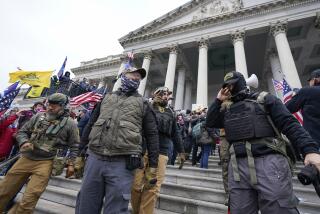Analysis: U.S. marks 60th anniversary of Brown ruling that desegregated schools
As the nation’s first African American president and his wife commemorate the 60th anniversary of the landmark Supreme Court ruling that desegregated schools, the United States is still coping with the divisive issue of race and with schools that in many ways remain segregated.
The 1954 ruling in Brown vs. Board of Education opened the door to the civil rights revolution of the following decades as legalized segregation was ended. But according to a recent study by UCLA’s Civil Rights Project/Proyecto Derechos Civiles, segregation of schools based on race and poverty remains after decades of efforts.
Today there are a variety of other factors that make for segregated schools. For example, birthrates among whites have stabilized while Latino birthrates have surged. School enrollment often depends on housing patterns, which in turn depend on affordability and job opportunities. Black and Latino students tend to be in schools with substantial majorities of poor children, the report notes.
The report, titled “Brown at 60: Great Progress, a Long Retreat and an Uncertain Future,” found that the South, once the most segregated part of the country, is now the least segregated region for black students. There has been an almost 30% drop in white students and an almost fivefold increase in Latino students over the decades.
Segregation is far more likely in major urban centers such as New York, Illinois and California, considered the worst for isolating black students, according to the report, which says that California is the state where Latino students are the most segregated.
“Brown was a major accomplishment and we should rightfully be proud. But a real celebration should also involve thinking seriously about why the country has turned away from the goal of Brown and accepted deepening polarization and inequality in our schools,” said Gary Orfield, co-author of the study and co-director of the Civil Rights Project.
“It is time to stop celebrating a version of history that ignores our last quarter-century of retreat and begin to make new history by finding ways to apply the vision of Brown in a transformed, multiracial society in another century,” he stated.
It is hard for many to understand how deeply race cut into American society 60 years ago, when the U.S. Supreme Court was asked to consider the legality of laws allowing students to be taught separately. It was an America where racial discrimination was largely condoned: Races could not legally intermarry in many places; entertainment, sports and other industries were often segregated on the field or stage, as well as in the audience; and the burden was on people of color to disprove the idea that they were inferior.
In the Brown case, which came out of Topeka, Kan., the nation’s highest court was asked to review a class action suit seeking to stop the practice of legally segregating students if comparable facilities were offered.
On May 17, 1954, the court unanimously overturned the separate-but-equal doctrine, finding that it violated the Constitution’s Equal Protection Clause of the 14th Amendment. The court technically overturned the 1896 case Plessy vs. Ferguson, and opened the door to a civil rights movement based on racial integration of institutions from schools to government.
It was a movement that would see years of additional court battles; new legislation such as the Voting Rights Act; and frequent, often violent, demonstrations.
President Obama was to meet Friday with families of the plaintiffs in the case as well as the lead attorneys from the NAACP Legal Defense and Educational Fund, which brought the suit and was instrumental in the legal battles to end segregation. The president has also issued a proclamation praising the decision for shifting “the legal and moral compass of our nation.”
Obama, a former community organizer, also noted that the court’s decision did not destroy segregation by itself.
“Thanks to the men and women who fought for equality in the courtroom, the legislature and the hearts and minds of the American people” he wrote, “we have confined legalized segregation to the dustbin of history. Yet today, the hope and promise of Brown remains unfulfilled. In the years to come, we must continue striving toward equal opportunities for all our children, from access to advanced classes to participation in the same extracurricular activities.”
Atty. Gen. Eric H. Holder Jr. stressed the same themes in his comments to the NAACP group.
“Although Brown marked a major victory, like anyone old enough to remember the turbulence of the 1960s, I also knew – and saw firsthand – that this country wouldn’t automatically translate the words of Brown into substantive change,” said Holder, the nation’s first African American to be attorney general.
“The integration of our schools – a process that was halting, confrontational and at times even bloody – did not by itself put an end to the beliefs and attitudes that had given rise to the underlying inequity in the first place.
“The outlawing of institutional segregation did not by itself soften the enmity – and alleviate the vicious bias – that had been directed against African American people and communities for generations. And the rejection, in its clearest form by our highest court, of legal discrimination could not – by itself – wash away the hostility that would, for years, fuel new, perversely innovative attempts to keep ‘separate but equal’ in place,” he said.
First Lady Michelle Obama was traveling to Topeka, where she will visit the Brown vs. Board of Education National Historic Site — formerly an all-black school — and address graduating seniors at the Kansas Expocentre. She had to cancel a Saturday appearance at a combined graduation ceremony in Topeka after complaints over the number of available seats.
More to Read
Start your day right
Sign up for Essential California for news, features and recommendations from the L.A. Times and beyond in your inbox six days a week.
You may occasionally receive promotional content from the Los Angeles Times.







